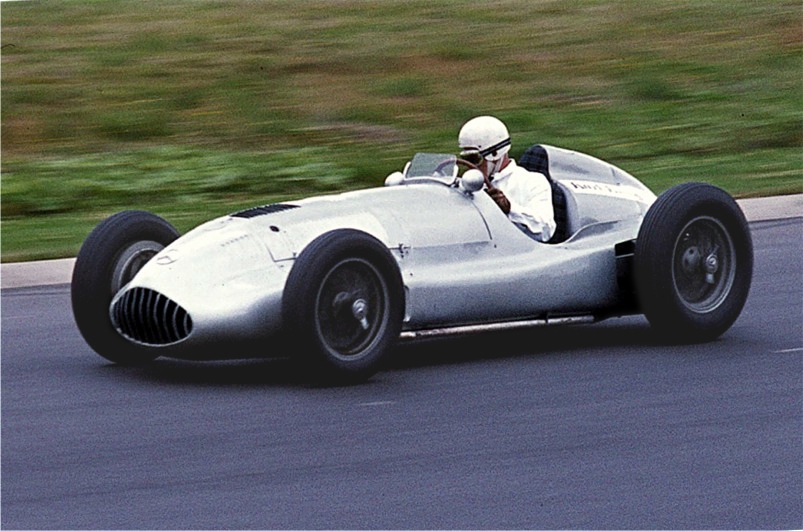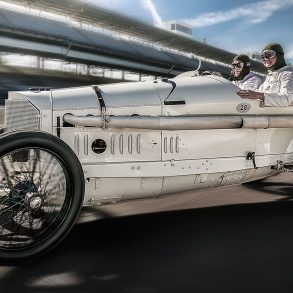Mercedes W 165
Car: Mercedes W165 / Engine: 600 V12 / Maker: Daimler-Benz / Bore X Stroke: 64 mm X 58 mm / Year: 1939 / Capacity: 1,495 cc / Class: Voiturette / Power: 254 bhp at 8,250 rpm / Wheelbase: 96.5 inches / Track: 52.8 inches front, 50.4 inches rear / Weight: 1543.2 lbs
Alfred Neubauer, the Mercedes team manager, was told in 1938 that next years Tripoli Grand Prix would be limited to 1.5 liter cars the better to insure an Italian victory. The minimum time required for producing a racing car at that time was approximately 18 months. They would only have 8 months before the Tripoli Grand Prix and the situation looked hopeless. Back at Stuttgart a meeting was held and all around the table there was a sense of gloom.
The Italians were about to kick the Germans out of the riches race of the year. Max Sailor, the managing director and an old racing driver felt that they could not back down in the face of this challenge and determined that Mercedes would build a car even if it required his factory to work day and night.
Special bonuses were were arranged and the factory at Untertürkheim became off limits except to those with special passes. Rumors began to appear that something was up at Mercedes but the possibility that anyone could build brand new cars on such short notice was dismissed by all except a few who would know best. Those few included Wilhelm Sebastian, formerly of Daimler-Benz but now technical racing manager at Auto Union. Soon he had his spies out gathering any information possible.
Auto Union, also began initial studies on a new 1.5 liter car. These designs included a front engined car but due to budgetary problems they would not have a car built prior to the outbreak of World War II.
At Mercedes it was another story. Sebastian assuming the role of detective discovered that the circuit at Hockenheim was preparing for its use by an unknown team. Knowing that Dietrich of Continental tires and Dr Glaser, the medical advisor of both Auto Union and Mercedes would be required during any important testing by Mercedes he made phone call to both parties. The news that he received made him spring into action. Both Dietrich and Dr Glaser had been called away to Southern Germany and would not be available for the next few days. Sebastian drove to Hockenheim and was present the next day when the new Mercedes cars were first tested.
Alfred Neubauer, in his biography relates to what happened next:
I was extremely pleased with the trial. I had just given orders to pack up when I saw a figure emerge from the bushes and recognized Sebastian.
“Good Heavens, man, you look as if you had just lost something”
I said.
“I’m afraid I have”
He replied with a wry grin.
“The Tripoli Grand Prix.”
The new car was designated the type W165 which was except for its engine, a scaled down W165 which itself was derived from their very succesful W154. The engine for this car was a new V8 with four ohc and two-stage supercharging developing 254 bhp. The German car’s performance rating of 170bhp/liter was unmatched by the Italian Alfa Romeo and Maserati cars.
Two cars would race at Tripoli and finish one-two with Lang leading Caracciola before the stunned Italian crowd. This was to be the Mercedes W165’s only victory, in fact their only race before Europe erupted into flames.


















